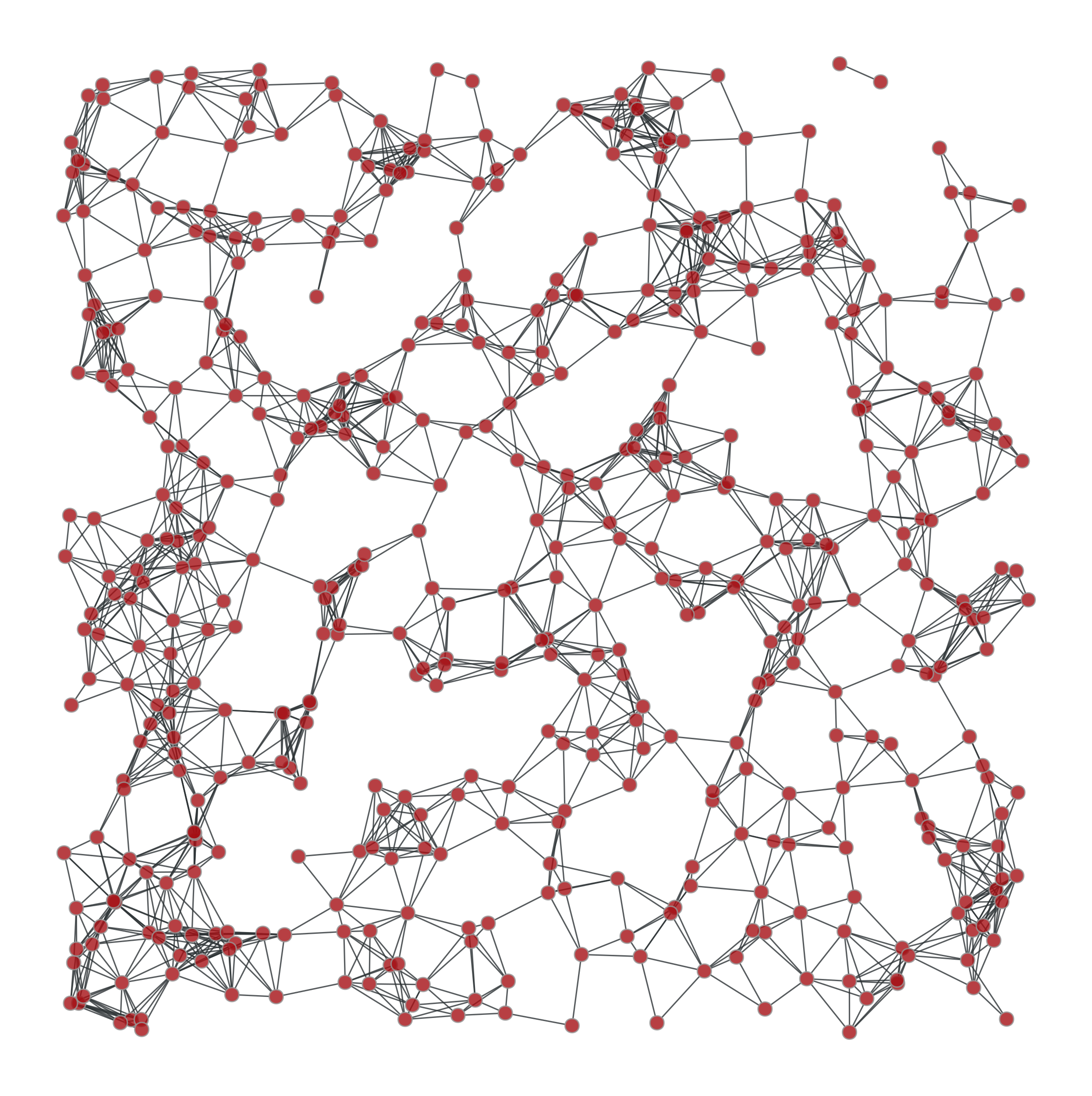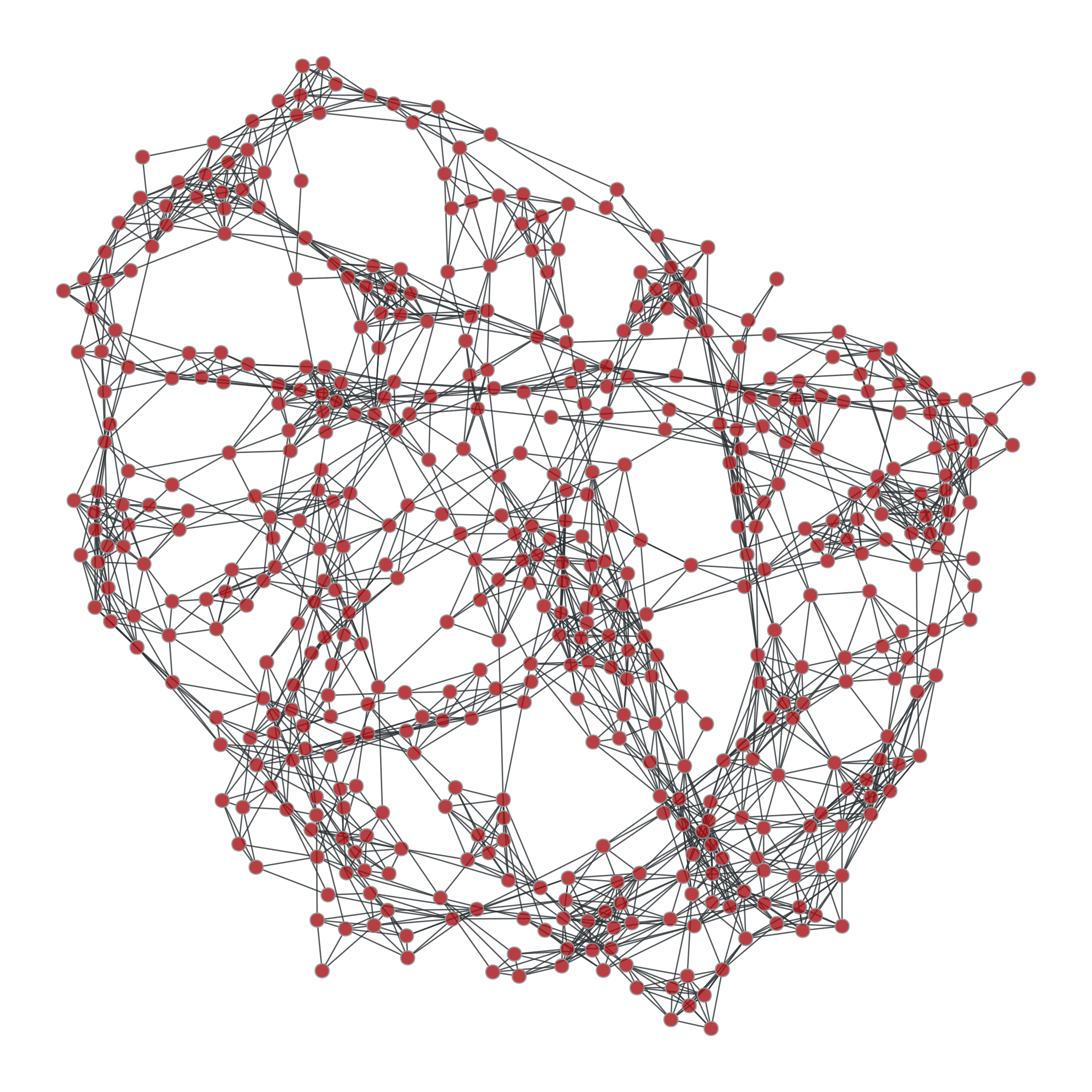geometric_graph#
- graph_tool.generation.geometric_graph(points, radius, ranges=None)[source]#
Generate a geometric network form a set of N-dimensional points.
- Parameters:
- pointslist or
numpy.ndarray List of points. This must be a two-dimensional array, where the rows are coordinates in a N-dimensional space.
- radiusfloat
Pairs of points with an euclidean distance lower than this parameter will be connected.
- rangeslist or
numpy.ndarray(optional, default:None) If provided, periodic boundary conditions will be assumed, and the values of this parameter it will be used as the ranges in all dimensions. It must be a two-dimensional array, where each row will cointain the lower and upper bound of each dimension.
- pointslist or
- Returns:
- geometric_graph
Graph The generated graph.
- pos
VertexPropertyMap A vertex property map with the position of each vertex.
- geometric_graph
See also
triangulation2D or 3D triangulation
random_graphrandom graph generation
latticeN-dimensional square lattice
Notes
A geometric graph [geometric-graph] is generated by connecting points embedded in a N-dimensional euclidean space which are at a distance equal to or smaller than a given radius.
References
[geometric-graph]Jesper Dall and Michael Christensen, “Random geometric graphs”, Phys. Rev. E 66, 016121 (2002), DOI: 10.1103/PhysRevE.66.016121 [sci-hub, @tor]
Examples
>>> points = random((500, 2)) * 4 >>> g, pos = gt.geometric_graph(points, 0.3) >>> gt.graph_draw(g, pos=pos, output="geometric.pdf") <...>
>>> g, pos = gt.geometric_graph(points, 0.3, [(0,4), (0,4)]) >>> pos = gt.graph_draw(g, output="geometric_periodic.pdf")


- Left: Geometric network with random points. Right: Same network, but
with periodic boundary conditions.